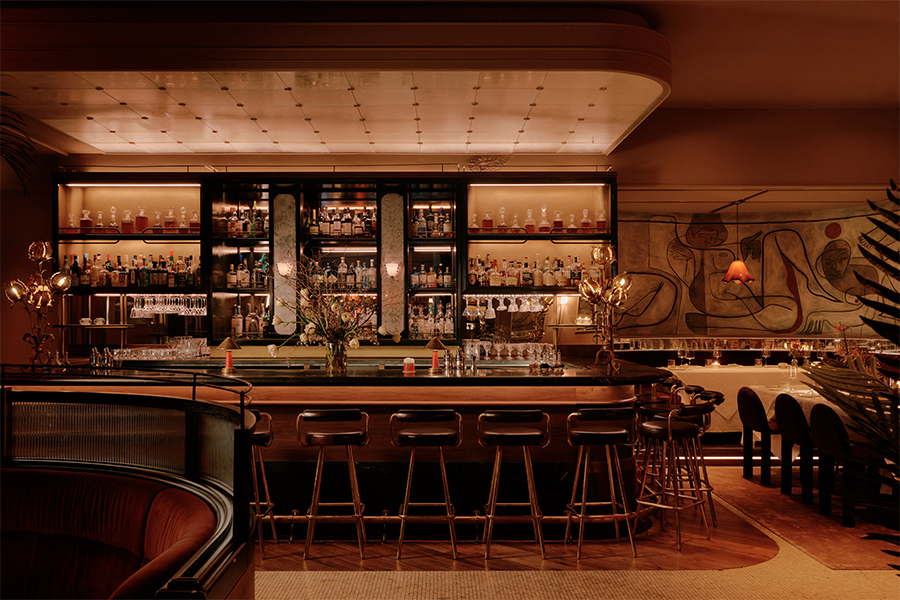“It’s making a play between street culture and the iconic Chinese restaurant,” says Siobhan Barry, partner in New York-based ICRAVE, of New York’s General restaurant.
Led by Top Chef Season 3 winner Hung Huynh, EMM Group’s restaurant brings classic Chinese dining straight to the Bowery. “Essentially, we wanted to place the Chinese restaurant in the back and peel away the layers to get back to the street,” says Barry. “It’s almost cut open like a stage set.”
.jpg)
Pulling from the outside in, an 80-foot façade with a retractable glass garage door opens up to the front cafe. “We looked at moving the dining experience outwards as well as the architecture space inwards,” says Barry. The black-and-white-tiled floor leads past a pastry counter, a bar, and into the back dining room.

“There are challenges to do one restaurant with a lot of parts and flexibility,” she adds. “We needed to carry the story twenty-four-hours a day.”
The back room’s design has a finished appeal. “We almost worked from the back forward,” says Barry. “As you move forward, it reveals less of the restaurant and more of the garage.” Custom wallpaper covers most of the dining room walls and ceiling⎯⎯seven the lampshades. “It’s just an oversaturated pattern of print taken to one extreme,” she adds.
.jpg)
The ornate wallpaper gives way to the bar wall’s wood, covered with chalk outlines of Chinese symbols, and gradually showing more of the concrete beneath. “Walking towards the entrance, it’s like ripping off the walls and what’s behind,” says Barry.
.jpg)
Blue paint adorns the revealed concrete, while round tables reflect a classic Chinese restaurant aesthetic. “We defined the space through simple industrial ways to give us the [garage] effect,” says Barry. Vintage, pyramid pendants light the front entrance. “Going from something polished like the fabric lanterns, the lights seem like bare bulbs,” adds Barry. “They have a real been-here-forever-feel.”
.jpg)
Clad in deep red enamel to match the remaining paper, the vinyl chairs have a Lower East Side allure. “It’s almost overly glossy,” Barry notes. “This is vinyl that feels like vinyl⎯⎯kind of cheap and fun and anti-designer.”
.jpg)
High-top tables and booths surround the bar⎯⎯the front room’s centerpiece. “You want to create liveliness,” says Barry. “If it’s not busy, you build that front room up.” Designed as a collapsible kiosk, the bar’s wood screen can be lowered in a similar fashion to traditional Asian stalls.
”Everything is decorative, even when it’s industrial,” says Barry. “It’s still part of the story.”
.jpg)



